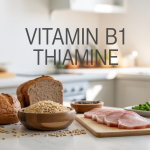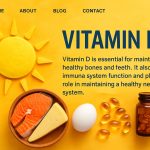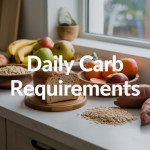Most people reach for a banana when they need more potassium, but you’re missing out on dozens of better options hiding in plain sight at your grocery store.
This guide is perfect for health-conscious adults, athletes looking to prevent muscle cramps, people managing blood pressure, and anyone tired of forcing down bananas for their daily potassium fix. You’ll discover 15 high-potassium foods that beat bananas every time, plus learn exactly how to add them to your meals.
We’ll explore why leafy greens like spinach and Swiss chard deliver nearly double the potassium of bananas per serving. You’ll also uncover surprising protein sources that pack serious potassium power, from white beans to salmon. Finally, we’ll share simple meal planning strategies and preparation methods that help you maintain peak potassium levels without the banana burnout.
Why Potassium Matters More Than You Think

Essential role in heart health and blood pressure regulation
Potassium works like a natural blood pressure medication inside your body. When you eat enough potassium-rich foods, this mineral helps your blood vessels relax and widen, making it easier for blood to flow through them. Think of it like opening up a garden hose that’s been kinked – everything flows more smoothly.
Your heart beats about 100,000 times per day, and potassium plays a starring role in every single beat. It helps regulate the electrical impulses that keep your heart rhythm steady and strong. People who get adequate potassium have significantly lower risks of stroke, heart disease, and high blood pressure.
The real magic happens when potassium teams up with sodium. While sodium makes your body hold onto water (raising blood pressure), potassium does the opposite – it helps your kidneys flush out excess sodium and water. This natural balance keeps your cardiovascular system running like a well-oiled machine.
Muscle function and preventing cramps
Ever wonder why athletes reach for sports drinks during workouts? It’s all about electrolytes, and potassium is the MVP. This mineral acts like a key that unlocks proper muscle contractions. Without enough potassium, your muscles can’t contract and relax properly.
Those painful leg cramps that wake you up at night? Often they’re your body’s way of telling you it needs more potassium. The mineral helps maintain the right balance of fluids inside and outside your muscle cells. When this balance gets thrown off, muscles can spasm, cramp, or feel weak.
Your body needs potassium for every type of muscle movement – from picking up a coffee cup to running a marathon. Even the smooth muscles in your digestive system depend on adequate potassium to move food through your body properly.
Kidney health and fluid balance
Your kidneys are like sophisticated filters, processing about 50 gallons of blood every day. Potassium helps these hardworking organs do their job more effectively. When you have enough potassium in your system, your kidneys can better regulate fluid balance and blood pressure.
Potassium acts as a natural diuretic, helping your body get rid of excess sodium and water without the harsh effects of pharmaceutical diuretics. This gentle process reduces strain on your kidneys and helps prevent kidney stones from forming.
The mineral also helps maintain the right pH balance in your blood. If your blood becomes too acidic, potassium steps in to neutralize it, protecting your kidneys from damage over time.
Daily potassium requirements most people miss
Most adults need about 3,500-4,700 mg of potassium daily, but here’s the shocking truth: over 90% of people don’t even come close to this target. The average person gets only about 2,600 mg per day – that’s a massive shortfall.
| Age Group | Daily Potassium Need |
|---|---|
| Adults 19+ | 3,500-4,700 mg |
| Pregnant women | 4,700 mg |
| Breastfeeding women | 5,100 mg |
This gap happens because we eat too many processed foods (which are naturally low in potassium) and not enough whole foods like fruits, vegetables, and legumes. Many people think they’re getting enough potassium from their daily banana, but one medium banana only provides about 420 mg – less than 10% of your daily needs.
The consequences of this deficiency show up as fatigue, muscle weakness, irregular heartbeat, and increased risk of high blood pressure. Your body can’t store potassium like it does other nutrients, so you need to replenish it daily through your food choices.
The Banana Myth: Why This Popular Fruit Falls Short

Actual Potassium Content in Bananas Versus Perception
When most people think about potassium-rich foods, bananas immediately come to mind. This reputation has been so well-established that many consider bananas the ultimate source of this essential mineral. The reality tells a different story.
A medium-sized banana contains approximately 422 milligrams of potassium. While this isn’t insignificant, it represents only about 9% of the daily recommended intake for adults. The widespread belief that bananas are potassium superstars likely stems from decades of marketing and their convenience as a portable snack.
The banana’s reputation became cemented in popular culture partly because they were among the first widely available fruits to have their nutritional content prominently advertised. Athletes began eating them for cramp prevention, and this association with potassium grew stronger over time. The truth is, bananas rank somewhere in the middle when compared to other potassium-rich foods.
Better Alternatives Hiding in Plain Sight
Your grocery cart probably already contains foods that deliver significantly more potassium than bananas. A cup of cooked spinach provides nearly 840 milligrams of potassium – double that of a banana. Sweet potatoes, often overlooked for their mineral content, contain about 542 milligrams per medium potato when baked with the skin on.
Avocados pack an impressive 975 milligrams of potassium per cup, making them one of the most potassium-dense fruits available. Even more surprising, a cup of cooked white beans delivers a whopping 1,189 milligrams – nearly three times what you’d get from a banana.
| Food Item | Potassium Content | Comparison to Banana |
|---|---|---|
| White beans (1 cup, cooked) | 1,189 mg | 2.8x more |
| Avocado (1 cup, cubed) | 975 mg | 2.3x more |
| Spinach (1 cup, cooked) | 840 mg | 2x more |
| Sweet potato (1 medium, baked) | 542 mg | 1.3x more |
| Banana (1 medium) | 422 mg | Baseline |
Nutritional Limitations Beyond Potassium Content
Bananas bring more to the table than just potassium, but they also have notable limitations that other foods don’t share. They’re relatively high in sugar, with about 14 grams per medium fruit, which can be problematic for people managing blood sugar levels. Their fiber content, while present at 3 grams per banana, doesn’t compete with powerhouse alternatives like beans or leafy greens.
Bananas also lack the protein content found in potassium-rich alternatives like salmon, chicken, or legumes. They provide minimal amounts of essential vitamins like vitamin K, folate, and vitamin A – nutrients abundantly found in dark leafy greens that also happen to be potassium champions.
The glycemic impact of bananas is another consideration. Their natural sugars can cause blood sugar spikes, especially in ripe bananas where starches have converted to simple sugars. Foods like spinach, broccoli, or salmon provide potassium without this glycemic concern, making them better choices for sustained energy and blood sugar stability.
While bananas aren’t nutritionally empty, building your potassium intake around them means missing opportunities to get more nutritional bang for your buck from foods that offer superior mineral content alongside additional health benefits.
Leafy Greens That Pack a Potassium Punch
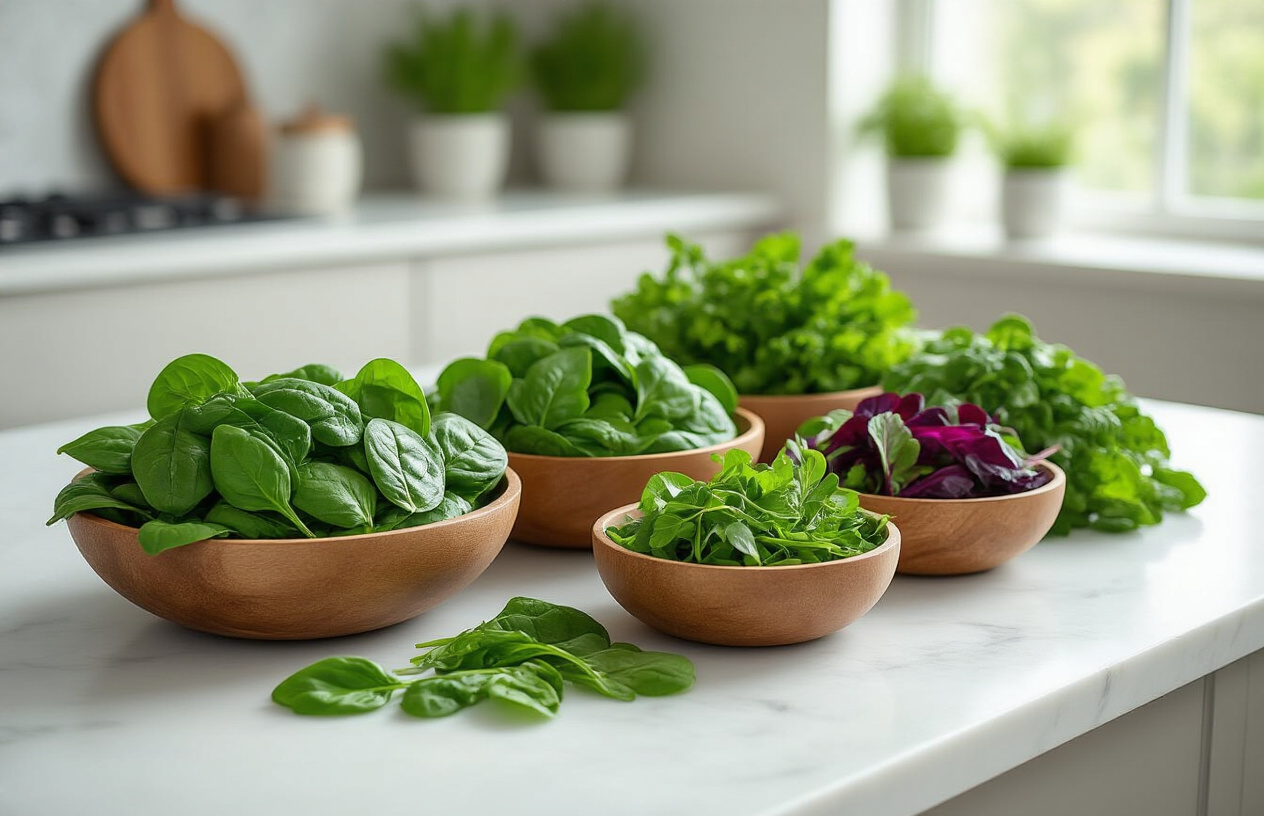
Swiss chard delivers triple the potassium of bananas
Swiss chard stands as the undisputed champion of potassium-rich leafy greens, containing approximately 961mg of potassium per cooked cup compared to a banana’s meager 358mg. This rainbow-stemmed vegetable doesn’t just win on numbers – it delivers this essential mineral alongside vitamin K, magnesium, and antioxidants that work together to support cardiovascular health.
The colorful stems aren’t just for show. Red, yellow, and white varieties each offer slightly different nutrient profiles, but all pack the same potassium punch. One cup of cooked Swiss chard provides nearly 20% of your daily potassium needs, making it an efficient way to meet your mineral requirements without loading up on calories.
Spinach provides sustained energy plus potassium
Fresh spinach delivers 839mg of potassium per cooked cup, but what makes it special is how it pairs this mineral with iron and folate for sustained energy production. Unlike the quick sugar rush from a banana, spinach provides steady fuel for your cells while supporting proper muscle function through its potassium content.
Baby spinach works perfectly in smoothies, masking any “green” taste while boosting your potassium intake. The key is combining it with naturally sweet fruits like berries or mango to create a drink that tastes like dessert but delivers serious nutrition.
Beet greens offer vibrant nutrition and mineral density
Those leafy tops you usually throw away? They contain 1,309mg of potassium per cooked cup – nearly four times what you’ll find in a banana. Beet greens taste similar to Swiss chard but with a slightly earthier flavor that pairs beautifully with garlic and olive oil.
Many people discard beet greens without realizing they’re tossing away the most nutritious part of the plant. These leaves also provide nitrates that support healthy blood pressure, working alongside potassium to keep your cardiovascular system running smoothly.
Easy ways to incorporate more greens daily
Start small by adding a handful of spinach to your morning smoothie – you won’t taste it, but you’ll get a significant potassium boost. Sauté Swiss chard with garlic as a side dish, or chop it into soups during the last few minutes of cooking.
Beet greens can replace any leafy green in recipes. Try them in pasta dishes, grain bowls, or as a base for salads. Buy beets with the greens still attached to get two vegetables for the price of one, maximizing both your potassium intake and your grocery budget.
Potassium-Rich Vegetables You Already Love
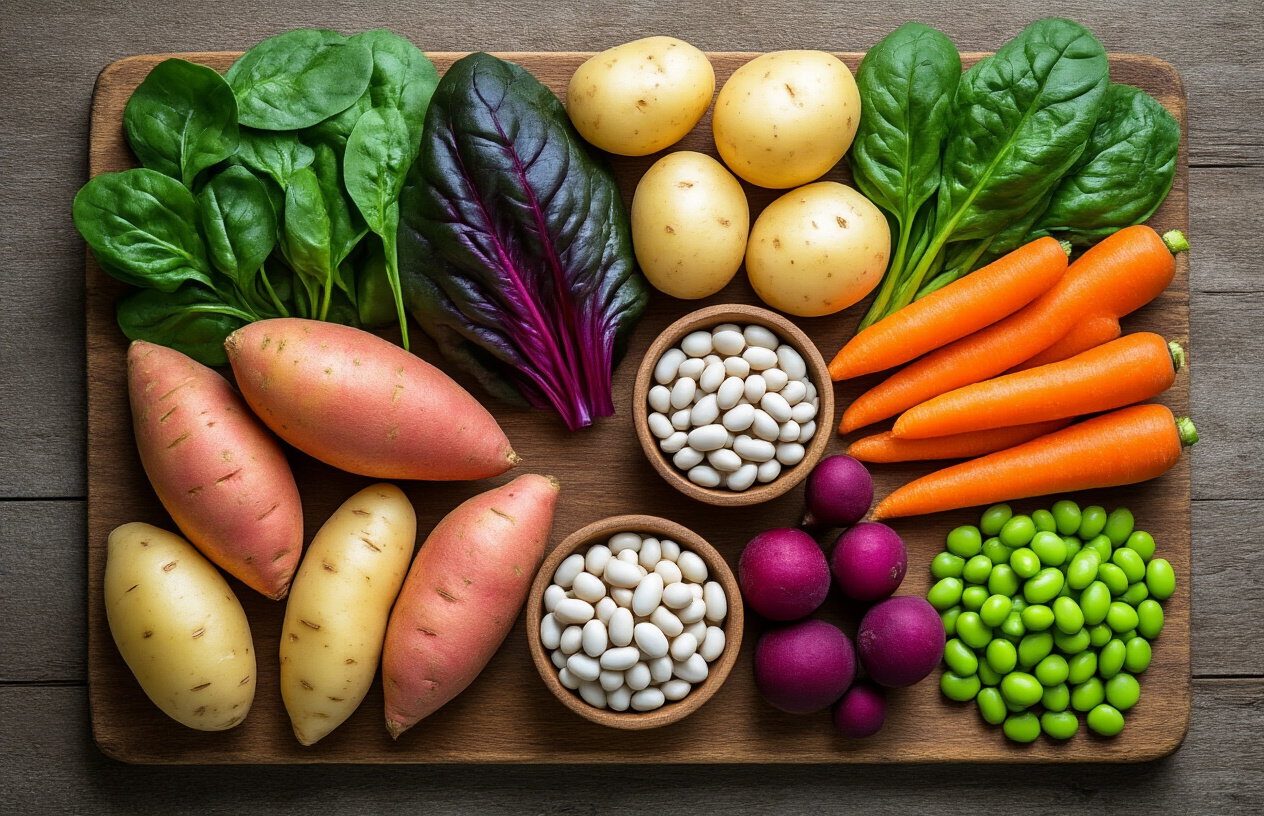
White potatoes with skin beat bananas by 600mg
Your regular baked potato isn’t just comfort food—it’s a potassium powerhouse that makes bananas look weak. A medium baked potato with skin delivers around 926mg of potassium, compared to a banana’s measly 358mg. That’s nearly three times more potassium in one delicious spud.
The skin holds much of the magic, so skip the peeler when you’re making mashed potatoes or roasted wedges. Even small red potatoes pack serious potassium punch, making them perfect for meal prep. Russet potatoes lead the pack, but Yukon Golds and fingerlings all outperform bananas by huge margins.
Popular potato preparations and their potassium content:
| Potato Type | Serving Size | Potassium Content |
|---|---|---|
| Baked russet with skin | 1 medium | 926mg |
| Mashed with skin | 1 cup | 628mg |
| Roasted red potatoes | 1 cup | 572mg |
| Sweet potato fries | 1 cup | 448mg |
Sweet potatoes provide beta-carotene bonus
Sweet potatoes bring serious versatility to your potassium game. One medium roasted sweet potato contains about 542mg of potassium while flooding your body with beta-carotene—the precursor to vitamin A. Your eyes, skin, and immune system get a major boost alongside that potassium fix.
The orange flesh signals high beta-carotene content, making sweet potatoes a nutritional double-hitter. Roast them whole, cube them for salads, or turn them into creamy soups. Purple sweet potatoes contain even more antioxidants, though they’re harder to find in most grocery stores.
Tomato products concentrate potassium power
Fresh tomatoes taste great, but processed tomato products concentrate the potassium into serious nutritional ammunition. Tomato paste, sauce, and sun-dried tomatoes all pack way more potassium per serving than their fresh counterparts.
One cup of tomato sauce contains approximately 728mg of potassium—double what you’d get from a banana. Tomato paste hits even harder with 162mg per tablespoon. Add marinara sauce to your pasta, use tomato paste in stews, or snack on sun-dried tomatoes for quick potassium hits.
Tomato product potassium comparison:
- Tomato sauce (1 cup): 728mg
- Tomato paste (2 tbsp): 324mg
- Sun-dried tomatoes (1/2 cup): 926mg
- Fresh tomato (1 medium): 292mg
Avocados deliver healthy fats plus potassium
Half an avocado gives you around 487mg of potassium wrapped in creamy, satisfying healthy fats. Those monounsaturated fats help your body absorb fat-soluble vitamins while the potassium supports your heart and muscles.
Avocados work in both sweet and savory dishes. Mash them for guacamole, slice them for salads, or blend them into smoothies for extra creaminess. The Hass variety contains slightly more potassium than Florida avocados, but both varieties smoke bananas in the potassium department. Plus, the fiber and healthy fats keep you fuller longer than banana snacks ever could.
Protein Sources That Double as Potassium Powerhouses
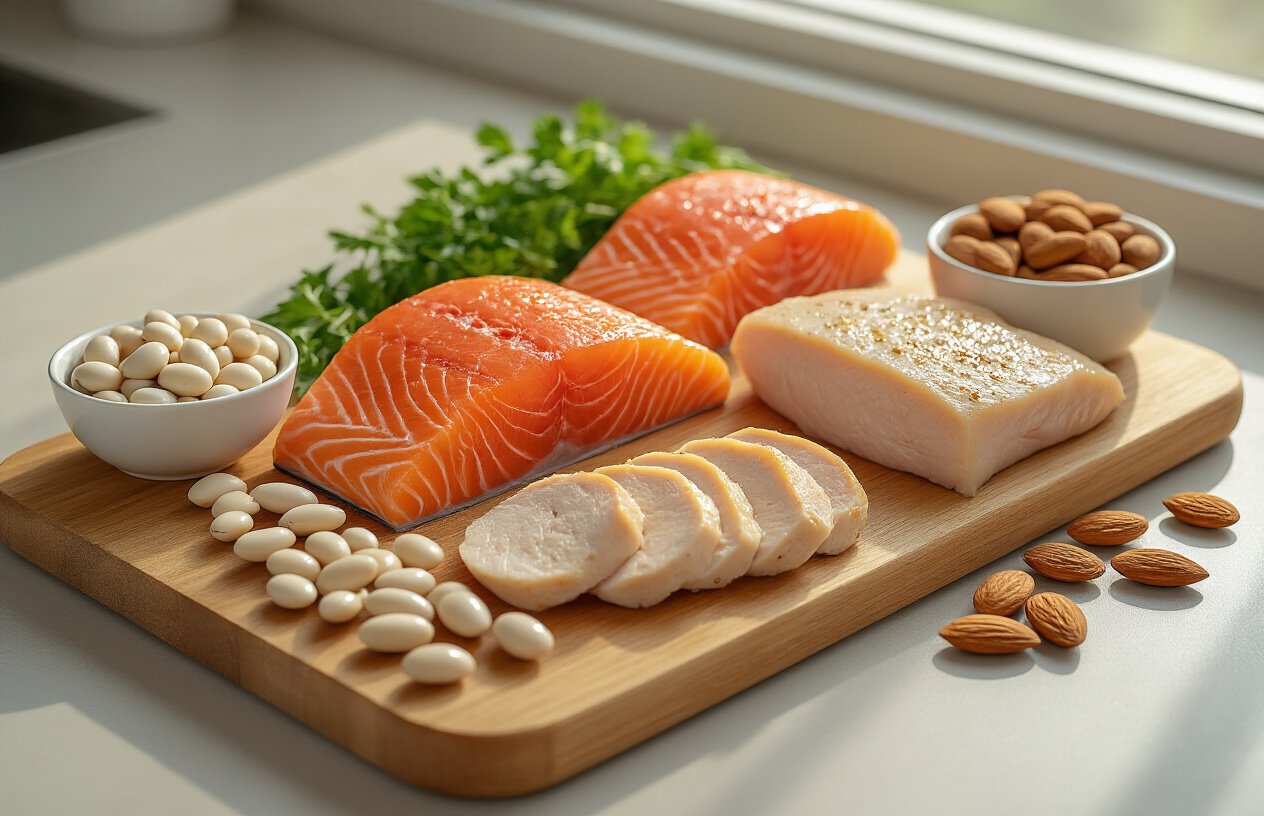
White beans contain nearly 1000mg per cup
White beans deserve serious recognition as potassium superstars. A single cup of cooked white beans delivers an impressive 1,000 milligrams of potassium – that’s nearly triple what you’d get from a medium banana. These versatile legumes don’t just stop at potassium; they’re packed with plant-based protein, fiber, and folate, making them nutritional multitaskers.
Navy beans, cannellini beans, and great northern beans all fall into this high-potassium category. You can easily incorporate them into soups, stews, salads, or even blend them into creamy hummus alternatives. Their mild flavor means they absorb whatever seasonings you throw at them, from Mediterranean herbs to spicy chili blends.
The combination of protein and potassium makes white beans particularly valuable for people looking to reduce their meat consumption while maintaining muscle health and proper blood pressure. They’re also budget-friendly, with dried varieties costing pennies per serving. Keep canned versions on hand for quick meal additions – just rinse them first to reduce sodium content.
Salmon provides heart-healthy omega-3s plus potassium
Wild-caught salmon brings together two nutritional powerhouses: potassium and omega-3 fatty acids. A 6-ounce serving contains around 600 milligrams of potassium while delivering those essential fatty acids your heart craves. This combination creates a double defense against cardiovascular disease.
The potassium in salmon works alongside omega-3s to reduce inflammation and support healthy blood pressure. Different salmon varieties offer slightly different potassium levels, with sockeye and king salmon leading the pack. Fresh, frozen, and even canned salmon (with bones) all provide substantial potassium benefits.
Cooking methods matter when you want to preserve both nutrients. Baking, grilling, or poaching salmon maintains its potassium content better than deep frying. Try pairing salmon with other potassium-rich foods like roasted sweet potatoes or spinach salad for a mineral-packed meal.
Yogurt combines probiotics with mineral benefits
Greek yogurt stands out as a protein-rich source that delivers both potassium and beneficial probiotics. One cup of plain Greek yogurt provides approximately 400 milligrams of potassium along with live cultures that support digestive health. This combination makes it a smart choice for people wanting to address multiple nutritional needs at once.
The protein content in Greek yogurt – often 15-20 grams per serving – helps with muscle maintenance and keeps you satisfied longer. Choose plain varieties over flavored options to avoid added sugars that can counteract some of the health benefits. You can always add fresh fruit or a drizzle of honey for natural sweetness.
Regular yogurt also contains potassium, though typically in smaller amounts than Greek versions. Both types offer calcium as an added bonus, creating a trifecta of bone-supporting nutrients. Consider yogurt as a base for smoothies, parfaits, or savory dips where you can layer in even more potassium-rich ingredients.
Unexpected Fruits That Outperform Bananas

Cantaloupe refreshes while delivering superior potassium
Cantaloupe brings serious potassium power to your plate, packing about 473 milligrams per cup – nearly 40% more than bananas. This juicy melon makes the perfect summer snack, delivering hydration alongside those essential electrolytes your body craves. The natural sweetness satisfies sugar cravings while supporting healthy blood pressure and muscle function.
What makes cantaloupe especially brilliant is its water content. You’re getting potassium plus natural hydration in every bite, making it ideal for post-workout recovery or those scorching summer days. The bright orange flesh signals high beta-carotene levels too, giving you vitamin A benefits as a bonus.
Oranges provide vitamin C and potassium together
Don’t overlook oranges in your potassium quest – one medium orange delivers around 237 milligrams of potassium while flooding your system with immune-boosting vitamin C. This dynamic duo works together to support cardiovascular health and keep your energy levels steady throughout the day.
Fresh orange juice bumps up the potassium even more, with one cup containing approximately 496 milligrams. However, eating whole oranges gives you fiber benefits that juice alone can’t match. The natural sugars release more slowly, preventing blood sugar spikes while delivering sustained energy.
Dried apricots concentrate potassium in portable form
Dried apricots pack an incredible potassium punch in tiny packages. Just half a cup provides around 755 milligrams of potassium – more than double what you’d get from a banana. The dehydration process concentrates nutrients, creating portable potassium bombs perfect for hiking, travel, or quick snacks.
These chewy gems store easily in your desk drawer or gym bag, ready whenever you need an energy boost. Mix them into trail mix, chop them into salads, or eat them straight from the bag. Their natural sweetness curbs dessert cravings while delivering serious nutritional benefits.
Coconut water naturally hydrates with electrolytes
Coconut water serves up about 600 milligrams of potassium per cup, making it nature’s sports drink. This clear liquid from young coconuts provides rapid hydration along with natural electrolytes that help prevent cramping and maintain proper muscle function.
Skip the artificially flavored sports drinks loaded with added sugars and food coloring. Coconut water tastes naturally refreshing and contains less sodium than most commercial alternatives. Keep it chilled for the best flavor, or freeze it into ice cubes for a tropical twist in your regular water.
Smart Shopping and Meal Planning Strategies

Reading Labels to Identify Hidden Potassium Sources
Many packaged foods contain significant amounts of potassium that aren’t immediately obvious. Start by checking the nutrition facts panel, where potassium is listed in milligrams per serving. Foods containing 400mg or more per serving qualify as excellent sources. Look beyond the basics – canned tomatoes, white beans, and even certain breakfast cereals can be potassium goldmines.
Pay attention to ingredient lists too. Foods containing potassium chloride as a salt substitute automatically boost potassium content. Dried fruits, nuts, and seeds often appear in processed foods and contribute substantial potassium. Even seemingly innocent items like yogurt, milk powder, and certain spice blends can add meaningful amounts to your daily intake.
Don’t overlook frozen vegetables, which often retain more potassium than their canned counterparts. Frozen spinach, lima beans, and edamame are particularly rich sources that many shoppers miss. Store brands frequently offer these items at lower prices while maintaining the same nutritional benefits.
Batch Cooking Potassium-Rich Ingredients
Preparing potassium-rich foods in bulk saves time and ensures you always have nutritious options ready. Cook large batches of sweet potatoes, white beans, and lentils at the beginning of each week. These foods store well in the refrigerator for up to five days and freeze beautifully for longer storage.
Roast several pounds of potatoes – regular, sweet, or both – at once. Cut them into different sizes: cubes for adding to salads, wedges for quick sides, and whole potatoes for stuffing or mashing later. The same approach works for winter squash like butternut and acorn varieties.
Prepare leafy greens by washing, chopping, and storing them properly. Blanch and freeze spinach and kale for smoothies or quick additions to soups and pasta dishes. Pre-washed greens stay fresh longer when stored with paper towels to absorb excess moisture.
Cook grains like quinoa and amaranth in large quantities. These protein-rich, potassium-containing grains form the base for countless meals throughout the week. Store them in portion-sized containers for grab-and-go convenience.
Building Balanced Meals Around High-Potassium Foods
Create meal templates that naturally incorporate potassium-rich ingredients. Start with a base of leafy greens or potassium-rich grains, add a protein source that also contains potassium, and finish with vegetables or fruits that complement the flavors while boosting the mineral content.
For breakfast, combine yogurt with dried apricots and almonds, or create smoothies using spinach, banana alternatives like kiwi or cantaloupe, and milk. Lunch bowls work perfectly with quinoa, roasted sweet potatoes, black beans, and avocado. Dinner plates benefit from salmon or chicken paired with roasted Brussels sprouts and mashed cauliflower.
Think about flavor combinations that make sense together. Mediterranean-inspired meals naturally include potassium-rich ingredients like tomatoes, white beans, spinach, and fish. Mexican-style dishes incorporate black beans, avocados, and sweet potatoes seamlessly.
Plan for snacks that contribute meaningfully to your potassium goals. Hummus with vegetables, trail mix with dried fruits and nuts, or simply an orange with almonds can bridge gaps between meals while adding substantial potassium.
Budget-Friendly Options That Maximize Nutritional Value
Dried legumes offer exceptional potassium value for money. Black beans, white beans, and lentils cost significantly less than their canned counterparts while providing identical nutrition. Buy them in bulk from discount stores or co-ops for even greater savings.
Seasonal shopping dramatically reduces costs while maximizing freshness and potassium content. Winter squash, sweet potatoes, and potatoes are typically cheapest during fall and winter months. Summer brings affordable melons, tomatoes, and leafy greens.
Frozen vegetables often cost less than fresh while retaining comparable potassium levels. Frozen spinach, lima beans, and mixed vegetables provide consistent quality year-round at stable prices. Buy them during sales and stock up for months of use.
Generic and store brands deliver identical nutritional value at lower prices. Compare labels to verify potassium content matches name brands, then choose the more affordable option. This applies especially to basics like canned tomatoes, dried fruits, nuts, and yogurt.
Consider less popular cuts of fish and meat that still provide excellent potassium. Canned salmon and sardines cost much less than fresh fish while offering comparable or superior potassium content. Chicken thighs and drumsticks provide more potassium than breasts at significantly lower prices.
Simple Preparation Methods That Preserve Potassium
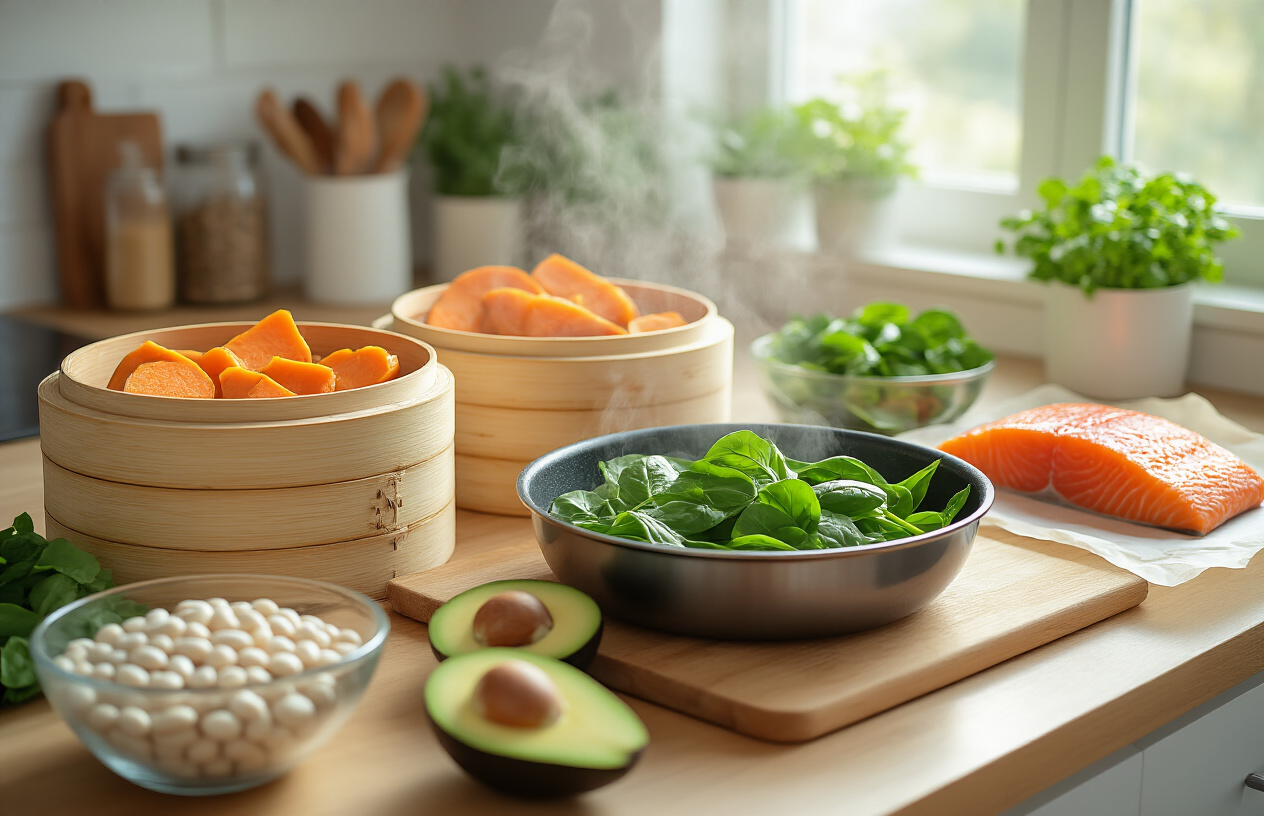
Cooking Techniques That Retain Mineral Content
Steaming stands as the gold standard for preserving potassium in your vegetables. Unlike boiling, which leaches minerals into the cooking water, steaming keeps nutrients locked inside the food. Place your vegetables in a steamer basket over an inch of boiling water, cover tightly, and cook until tender-crisp. This method works beautifully for spinach, broccoli, and Brussels sprouts.
Roasting at moderate temperatures (350-400°F) actually concentrates potassium content by reducing water volume while maintaining mineral density. Toss your vegetables with a light coating of olive oil and roast until caramelized. Sweet potatoes, beets, and winter squash develop deeper flavors while keeping their potassium intact.
Microwaving might surprise you as a nutrient-preserving champion. The quick cooking time and minimal water requirement mean less mineral loss. Pierce potatoes before microwaving, and steam leafy greens in a microwave-safe dish with just a tablespoon of water.
When you must boil, save the cooking liquid for soups or smoothies – that water contains dissolved potassium that would otherwise go down the drain. Pressure cooking works similarly to steaming, using minimal water and shorter cooking times to preserve nutrients.
Raw preparations like salads maximize potassium retention since no cooking occurs at all. Massaging tough greens like kale with a bit of salt breaks down fibers while keeping all minerals present.
Storage Tips to Maintain Nutritional Value
Temperature control makes the biggest difference in potassium preservation. Store potatoes, sweet potatoes, and winter squash in cool, dark places around 50-60°F – not in the refrigerator where cold temperatures convert starches to sugars and can damage cell walls. A pantry or basement often provides ideal conditions.
Leafy greens require different treatment. Wrap them loosely in damp paper towels and store in the refrigerator’s crisper drawer. The slight humidity prevents wilting while cold temperatures slow nutrient degradation. Don’t wash greens until you’re ready to use them, as excess moisture accelerates decay.
Bananas and other fruits should ripen at room temperature, then move to the refrigerator to slow further ripening. The cold slows enzyme activity that breaks down potassium and other nutrients. Separate ethylene-producing fruits like bananas from other produce to prevent premature ripening.
Frozen vegetables often contain more potassium than fresh ones that have traveled long distances. Freezing stops nutrient loss immediately, while fresh produce continues losing minerals during transport and storage. Buy frozen when fresh options look tired or have been sitting on shelves too long.
Light exposure breaks down nutrients, so store potatoes and onions in opaque bags or containers. Transparent plastic bags might look convenient, but they allow light penetration that degrades nutritional content over time.
Quick Recipes for Busy Lifestyles
5-Minute Microwave Sweet Potato: Pierce a medium sweet potato several times, microwave for 4-5 minutes, flip halfway through. Top with Greek yogurt and cinnamon for 900mg of potassium in under five minutes.
No-Cook Spinach Smoothie: Blend 2 cups fresh spinach, 1 banana, 1 cup coconut water, and ice. This combination delivers over 1,200mg of potassium and takes 2 minutes to prepare. Make multiple servings and store in the refrigerator for grab-and-go nutrition.
Sheet Pan Roasted Vegetables: Toss cubed sweet potatoes, Brussels sprouts, and beets with olive oil. Roast at 400°F for 25-30 minutes while you prepare other meals. One pan provides several days of potassium-rich sides.
Instant Potato Bowl: Keep pre-cooked potatoes in your refrigerator. Reheat in the microwave, top with avocado, black beans, and salsa for a complete meal with over 1,500mg of potassium in under 3 minutes.
Batch-Prepped Greens: Wash, chop, and lightly steam large quantities of kale or spinach on weekends. Store in meal-sized portions in the freezer. Add frozen portions directly to soups, pasta dishes, or scrambled eggs during busy weekdays.
These methods transform high-potassium foods into convenient options that fit any schedule while preserving their nutritional powerhouse status.
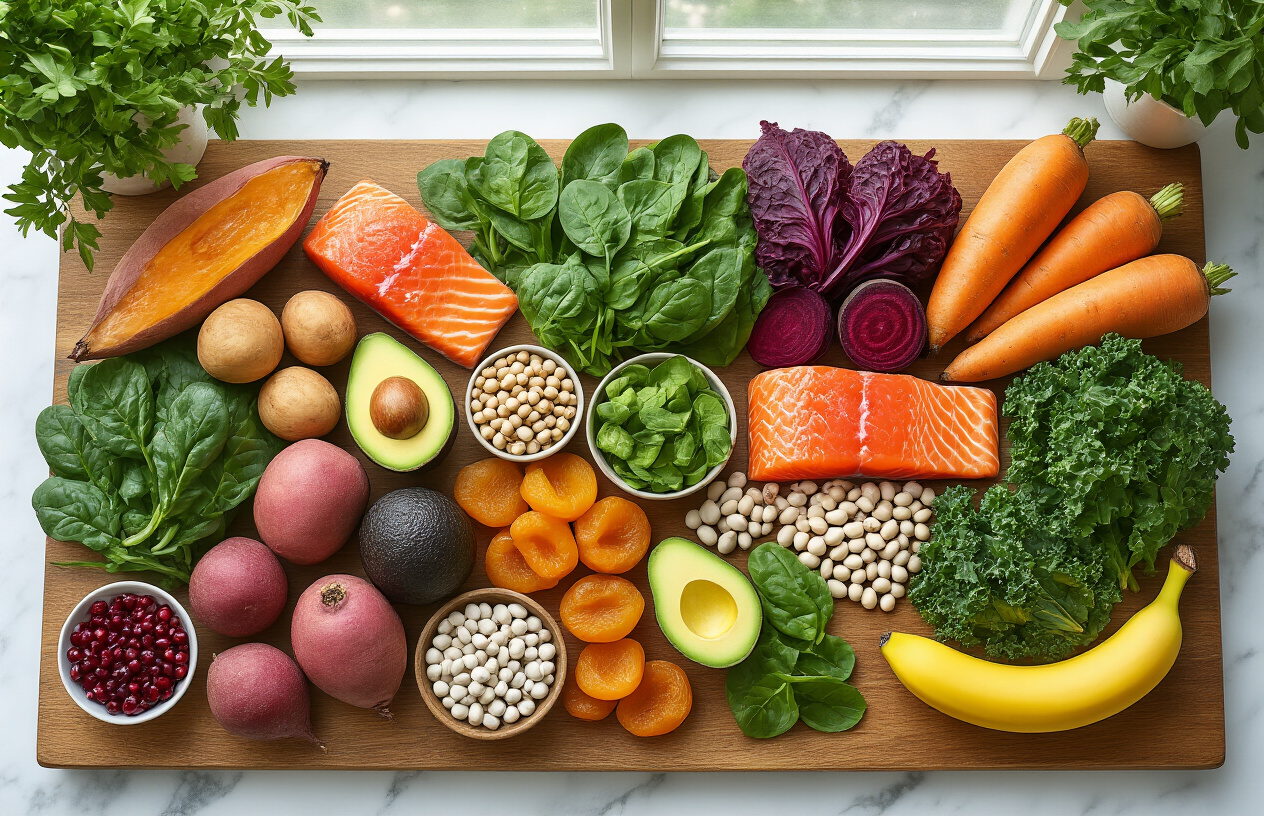
Bananas might be the poster child for potassium, but they’re honestly just the opening act. From spinach and Swiss chard to sweet potatoes and salmon, there’s a whole world of foods that deliver way more potassium per serving. These alternatives don’t just beat bananas in numbers – they bring extra vitamins, minerals, and flavors that make your meals more interesting and nutritious.
Getting enough potassium doesn’t have to mean forcing yourself to eat three bananas a day. Mix some white beans into your soup, throw avocado on your toast, or snack on dried apricots instead. Your heart, muscles, and blood pressure will thank you for the variety. Start swapping just one or two of these potassium champions into your weekly routine – your body won’t know what hit it, and your taste buds will definitely approve.
